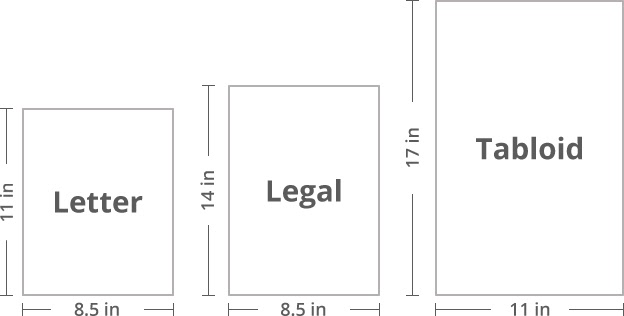Have you ever wondered what the numbers on a box of printer paper's cover meant? Have you ever questioned the meaning of the numbers on a box, such as A5, A4, or Tabloid, or why there are so many of them? We're here to explain and simplify the complex world of paper sizes, so don't worry.
Although there are alternative paper size standards, the international and North American systems are the two that are most commonly used today. The global standard, also called the ISO 216 standard, is applied everywhere. We'll concentrate on the North American system today, which is mostly used in the USA and Canada. The standard contains various extra sizes that you might not use as frequently, as well as the well-known Letter (8.5 in x 11 in) and Legal (8.5 in x 14 in).
SIZES OF NORTH AMERICA
The paper sizes used in North America are based on conventional formats with arbitrary ratios. The Letter (8.5 x 11 inches), Legal (8.5 x 14 inches), and Tabloid (11 x 17 inches) formats are the most often used traditional sizes. These formats are probably used in your daily life. The preferred style for academic and corporate documents is letter. Legal pads are created using the Tabloid format, which is also used to create tabloids and other smaller-sized publications.
A STANDARD ARISE
The ANSI/ASME Y14.1 standard was adopted by the American National Standards Institute in 1995. This system's various formats are identified by the letters ANSI followed by a number. The conventional sizes continue to be the most popular despite the existence of this regulation. In that cutting a sheet in half results in two sheets of the following size, the ANSI paper formats are comparable to those of the ISO standard.
In universities where students are more frequently held to international standards when attending conferences or submitting articles to international journals, the use of American paper sizes has decreased because it frequently causes a number of issues when it comes to the international exchange of documents.
Internationally recognised paper sizes range from A0 to A7 and include a basic business card size (BC). The worldwide standard sizes are expressed in millimetres because the majority of European nations adhere to the metric system. Fortunately, files may be set up to print on both ANSI and ISO paper formats.
A MERGER OF STANDARDS
In order to print a copied document on a variable size of paper, many copy machines contain preset magnification factors for enlarging or decreasing the duplicated document. These presets are often represented by buttons with the letters A3, A4, and so on. By doing this, you avoid wasting margin space and avoid the hassle of attempting to estimate the appropriate magnification factor, which might result in paper waste.








No comments